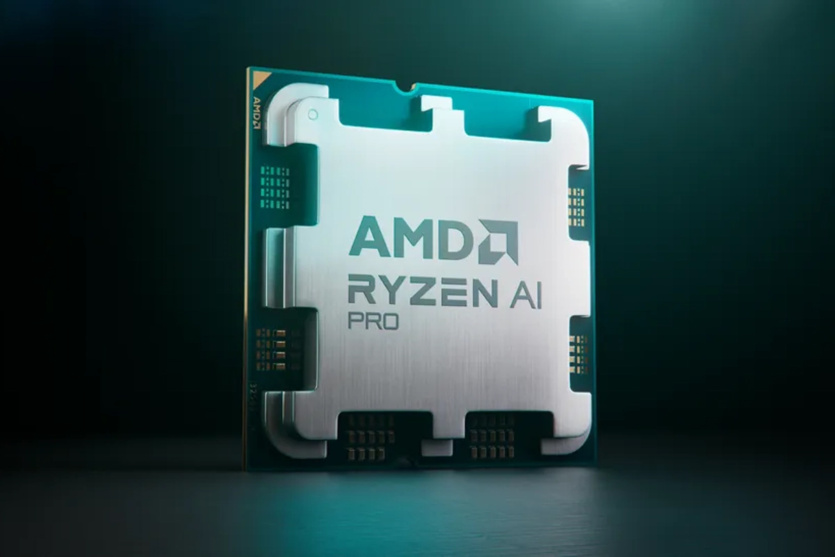
AMD today announced a new series of Ryzen Pro processors. The company has extended the Hawk Point 8040 series to laptops and workstations and introduced the new Ryzen 8000 Phoenix processors with integrated graphics for desktops. With the custom versions of the processors, AMD became the first x86 chipmaker to bring its neural processing unit (NPU) for artificial intelligence processing to the mobile and desktop market.
AMD claims that its 16 TOPS mobile processors have an advantage over Intel’s Core Ultra Meteor Lake models with 11 TOPS NPUs. AMD also maintains an advantage in the overall system TOPS score, which includes both CPU and integrated graphics power, with 39 TOPS compared to Intel’s 34 TOPS. AMD’s Ryzen 8000 desktops also have an integrated NPU chip that delivers 16 TOPS, while Intel has yet to release a desktop processor with an AI processing chip.
Notably, AMD or Intel processors still don’t meet Microsoft’s specifications for next-generation AI PCs, which require 45 TOPS from the NPU. The 45 TOPS requirement is designed to allow Microsoft to run the Copilot AI elements locally, and it is unclear how a future Windows update that enables this feature will work on these processors. For comparison, Qualcomm’s Snapdragon X Elite chips debuted with 45 TOPS of NPU performance in the middle of the year. Apple’s M3 processors deliver 18 TOPS of NPU performance, but are apparently unaffected by Microsoft’s requirements.
Mobile AMD Ryzen Pro 8040
The Ryzen Pro 8040 processors are based on the previous Hawk Point chips based on Zen 4 without the Pro designation. The U-series processors are designed for a TDP range of 15-28W, while the HS variants are divided into 20-28W and 35-54W Ryzen 9, 7, and 5 lines. The number of cores of the new processors ranges from 6 cores and 12 threads in Ryzen 5 to 8 cores and 16 threads in Ryzen 7 and 9. The younger Ryzen 5 Pro 8540U does not have a built-in NPU.
AMD has shared comparisons of its processors and Intel chips. The company claims an average 15W advantage of the Ryzen 7 Pro 8840U over the 15W Intel Core Ultra 7 165U processor in workloads that include multitasking, rendering, general performance, graphics, and content creation. It also claims an average advantage of 18% over the 28W Core Ultra 7 165H.
According to the company, the 45W Ryzen 9 Pro 8945HS for workstations delivers a 50%+ advantage in the Topaz Labs AI-based video program over the 45W Intel Core Ultra 9 185H and is 77% faster with Llama 2 LLM. AMD also shared tests with a wider range of AI models. The claimed performance benefits range from 5% to 23% for a number of CPU-intensive applications.
The mobile chips are claimed to have 46% better battery life than the Intel Core Ultra 7 165H processor during Teams workflows and a slight advantage over the Apple M3 Pro processor. However, the Apple chip is missing from any direct comparison.
Ryzen Pro 8000G for PC
The Ryzen Pro 8000 series for desktop PCs is based on the previous 8000G series without the Pro index. All models have a built-in NPU AI acceleration chip. All relevant specifications remain identical to existing consumer models, with processors ranging from 4 cores and 8 threads to 8 cores and 16 threads in the Ryzen Pro 3, 5, and 7 families. The standard 8000G models have a customizable TDP range of 45-65W, while the GE models have a lower power rating of 35W.
Overall, AMD claims an average increase of 19% over Intel’s Core i7-14700, with a peak of a 3x advantage in the Time Spy graphics benchmark. This is not surprising given the powerful combination of the Zen 4 processor with the RDNA 3 video chip. AMD also claims 33% to 76% lower power consumption across different configurations.
Source: Tom`s Hardware

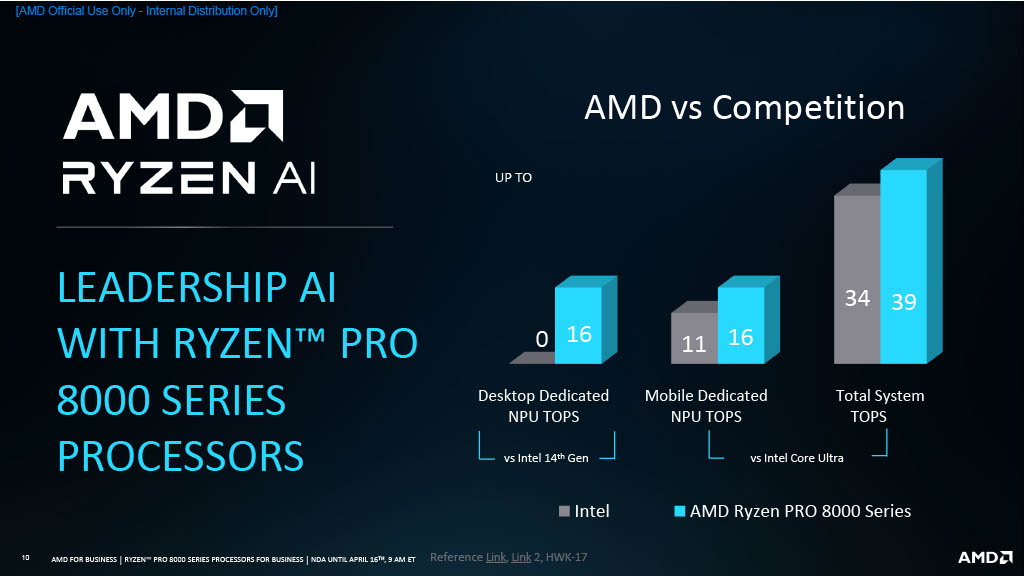
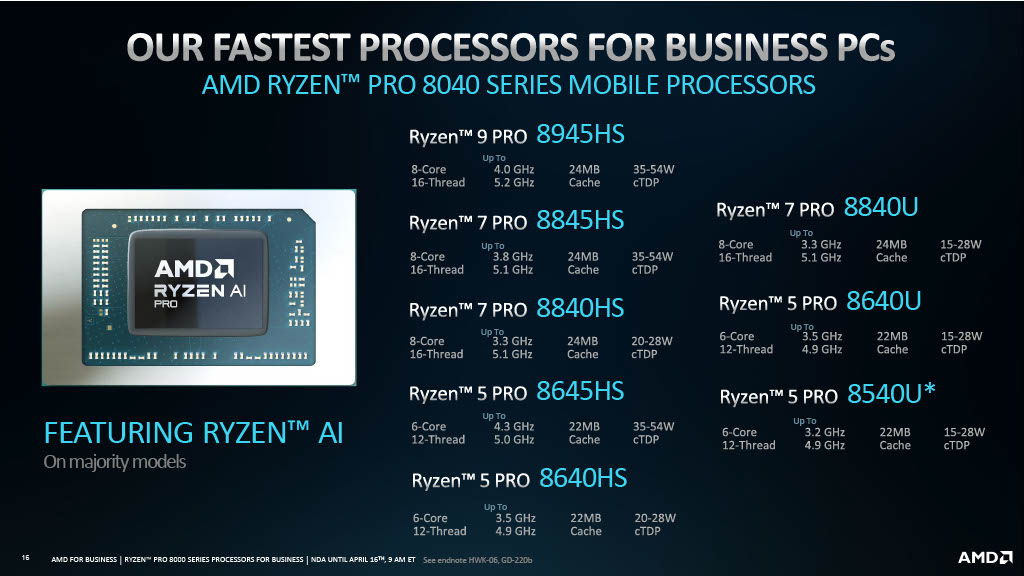
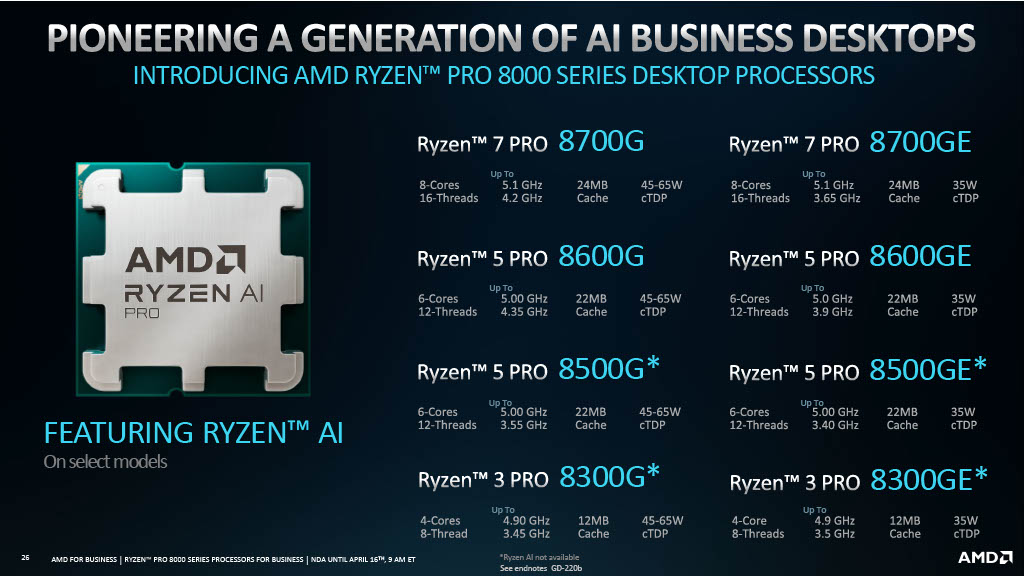
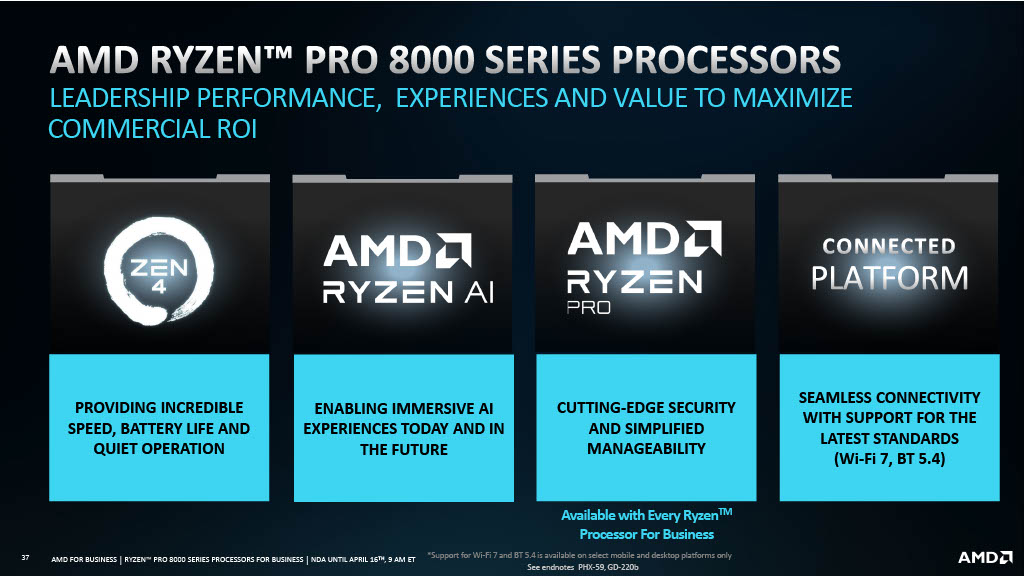
Spelling error report
The following text will be sent to our editors: